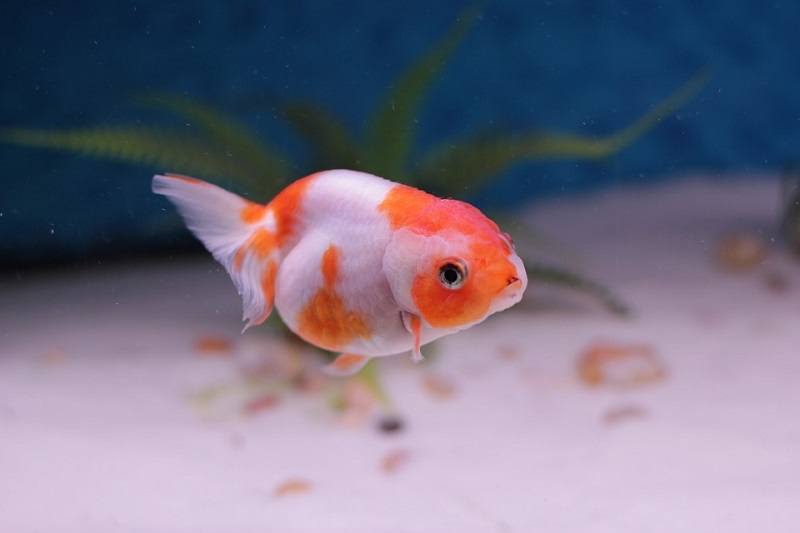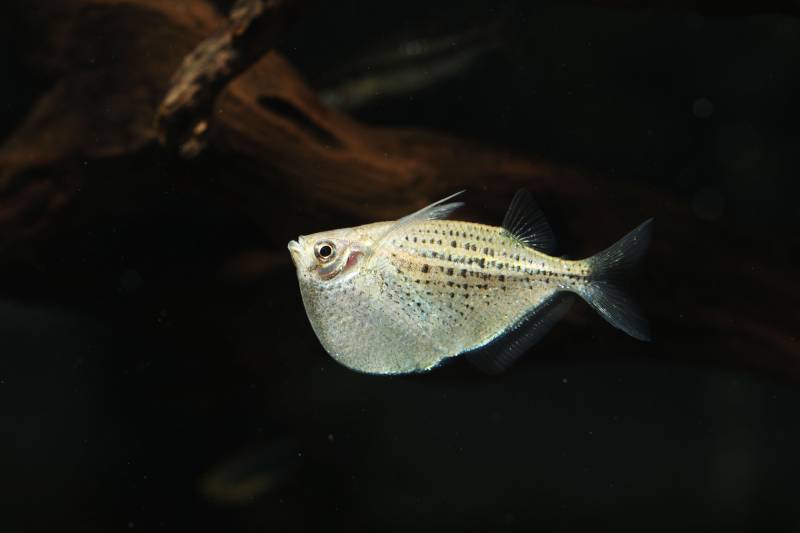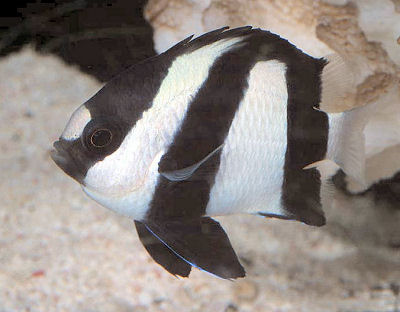Salamanders and newts are some of the most popular amphibian pets in the world for several reasons. They are generally easy to care for, have basic housing requirements, and are incredibly interesting animals. There are over 650 species of salamanders and newts, and like almost all amphibians, they spend most, if not all, of their lives in water.
Salamanders and newts have much in common, but there are important distinctions. All newts are salamanders, but not all salamanders are newts! Newts have webbed feet and paddle-like tails ideal for living in the water. Salamanders are adapted to living on land, with longer, rounded tails and developed toes that are evolved for efficiently digging in the soil. Salamanders that spend most of their time in water are called newts.
Both newts and salamanders make excellent pets, and if you’d like to know more about these unique animals, you’ve come to the right place! Read on for eight of the best newts and salamanders to keep as pets.

Do Newts and Salamanders Make Good Pets?
While newts and salamanders make great pets from an observatory point of view, they are not partial to being handled and can be described as “hands-off pets.” Handling can easily damage their incredibly delicate skin, which can cause infections from bacteria.
They are generally easy animals to care for but have specific requirements. Because they spend most of their time in the water, they need to have clean water in their tank that is free from any pollutants, and their water temperature cannot be too warm, or it can result in a weakened immune system and increased susceptibility to infections. It’s also important to note that they are primarily nocturnal, so you’ll only see them active at night.
If you want an interactive or cuddly type of pet, unfortunately, amphibians are not ideal for you. But if you’re looking for a unique pet that’s entertaining to watch, newts and salamanders make lovely pets.
Top 8 Salamander & Newt Species that Make Great Pets
1. Axolotl
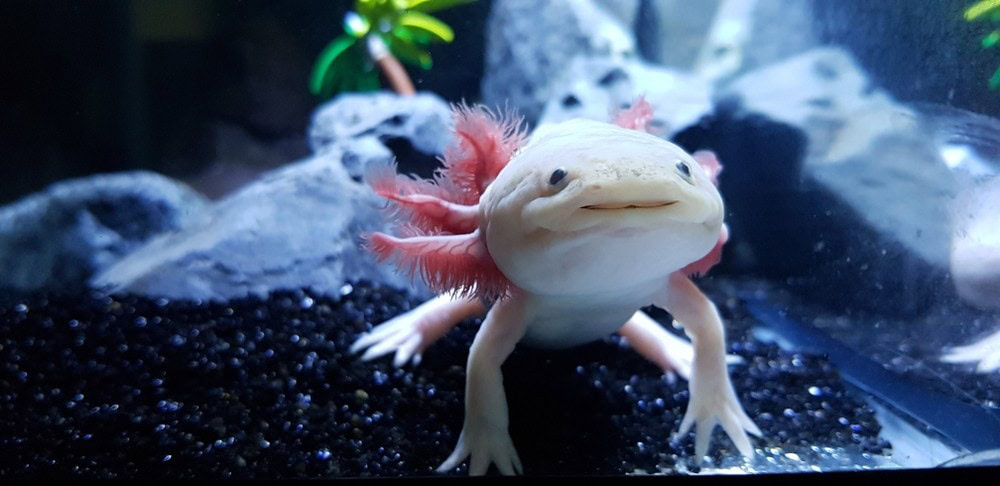
| Species name: | Ambystoma mexicanum |
| Lifespan: | 10–15 years |
| Average size: | 15–17 inches |
The Axolotl, or Mexican salamander as it’s commonly known, is one of the largest salamander species, reaching lengths of up to 17 inches in adulthood. They are unique salamanders in that they retain some of their larval features into adulthood, including their gills and fins, making them one of the most sought-after amphibians as pets.
These salamanders never leave the water and live a wholly aquatic life, so they require aquatic housing. They need a water depth of at least 6 inches, with large plants, substrate, and rocks larger than the Axolotl’s head to ensure that they are not swallowed. These amphibians are stressed by flowing water, so they need a gentle filtration system, but no lights are required.
2. California Newt
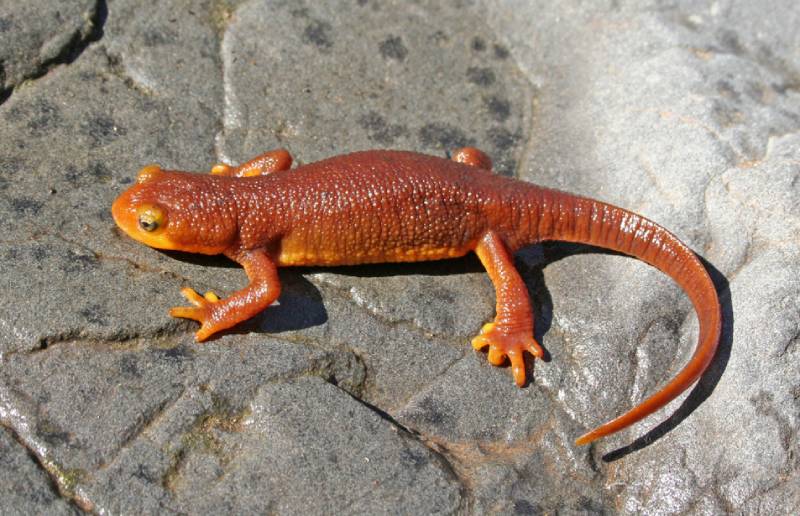
| Species name: | Taricha torosa |
| Lifespan: | Up to 20 years |
| Average size: | 6–8 inches |
The California newt can reach lengths of up to 8 inches in adulthood, making them a relatively large species. They are commonly kept as pets, but they are illegal to keep as pets in California, where they originate. They are ideal for beginners because they are easy to care for and have a distinctly non-aggressive nature. However, they contain tetrodotoxin, a potent neurotoxin, and it’s vital to wash your hands and utensils thoroughly after coming into contact with these newts.
California newts require semi-aquatic or terrestrial housing, depending on their life stage, and in adulthood, they remain primarily terrestrial except for during mating. They are easy to house because they do not require high humidity; daily misting of their terrarium is all that’s needed.
3. Dunn’s Salamander
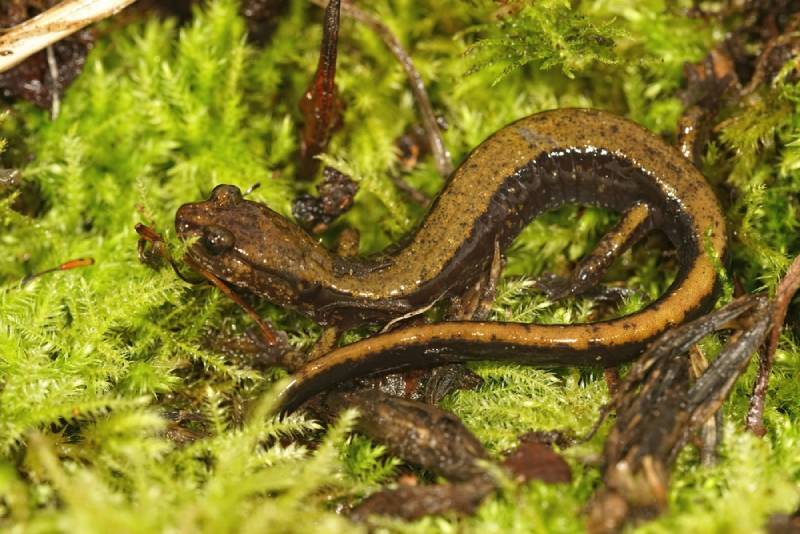
| Species name: | Plethodon dunni |
| Lifespan: | 10–12 years |
| Average size: | 5–6 inches |
Originating in Japan, the Dunn’s salamander is slowly gaining popularity as a pet due to its hardiness and relative ease of care. They are small salamanders, reaching about 6 inches in adulthood, and typically have a gray-green base color with round black spots. However, some salamanders will not have any spots and may also have an iridescent blue coloration over their entire bodies.
Proper housing for these salamanders should include aquatic and terrestrial sections; they spend most of their time on land but often go into the water in search of food or during breeding. They are reclusive animals that spend most of their time hidden away.
4. Eastern Newt
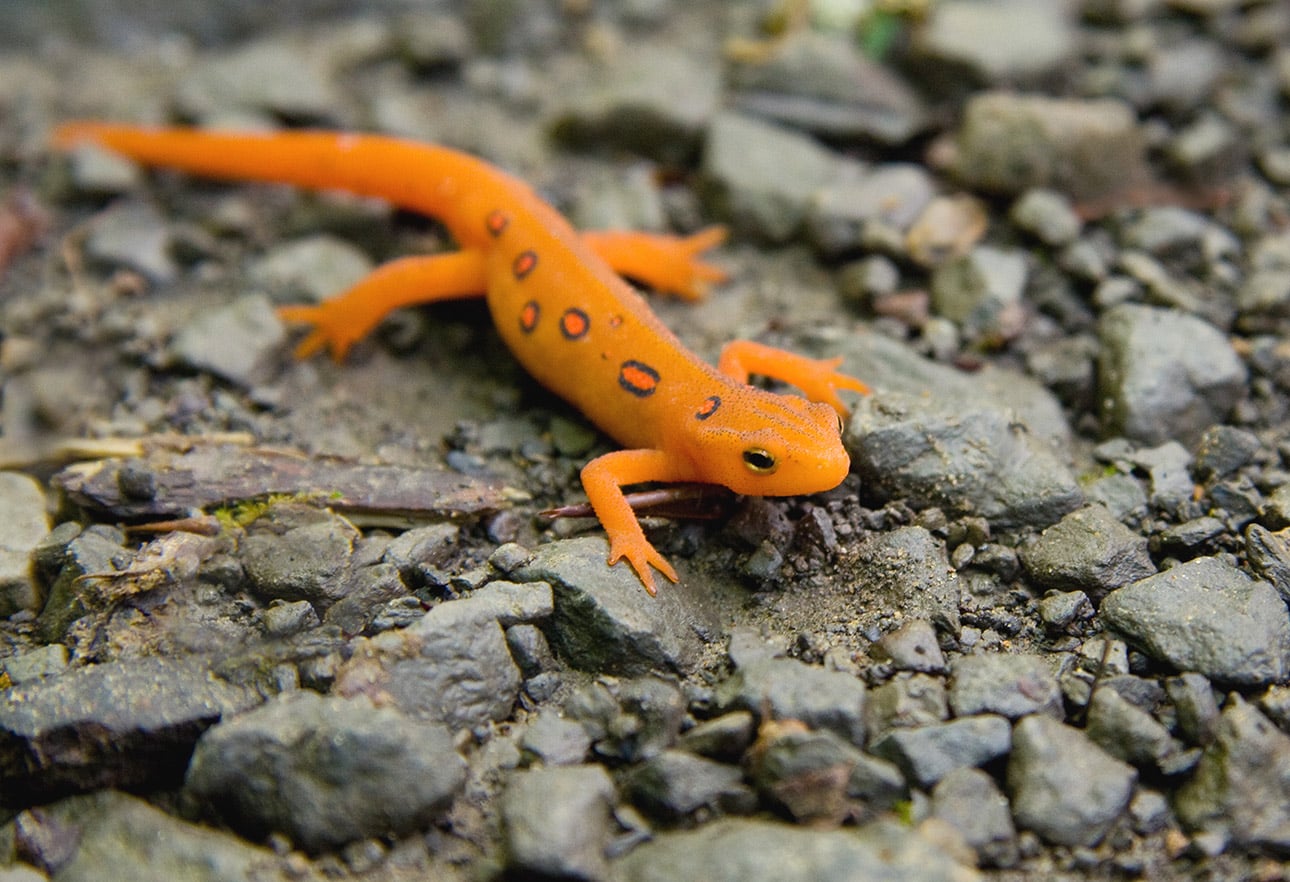
| Species name: | Notophthalmus viridescens |
| Lifespan: | 12–15 years |
| Average size: | 4–5 inches |
The Eastern newt is somewhat of a challenge to care for because it has three distinct life stages that each have different housing requirements. The larvae are aquatic, juveniles are terrestrial, and adults are primarily aquatic. Four regional varieties of Eastern Newt have distinctly different colors and markings, but according to DNA studies, they are not valid subspecies because they have little genetic variance.
Their housing requirements naturally depend on their life stage, but even adults need terrestrial space with rocks or wood. The water depth is not a huge consideration because these newts have been found inhabiting shallow and deep bodies of water, but they prefer still water.
5. Fire Belly Newt
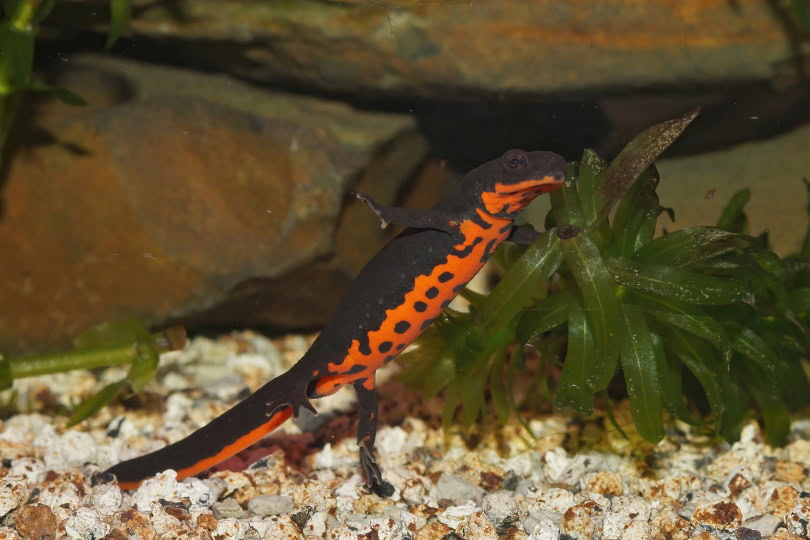
| Species name: | Cynops pyrrhogaster |
| Lifespan: | Up to 25 years |
| Average size: | 4–5 inches |
Originating in Japan, the Fire Belly Newt is a fairly large species, reaching around 5 inches in adulthood. They are often confused with the similar-looking Chinese Fire Belly, but Japanese varieties are much larger and more robust and have a different skin texture.
When housing a Japanese Fire Belly, you’ll need a fairly large tank because they need semi-aquatic conditions. Fire Belly newts have been observed living almost entirely aquatic lives in some areas to semi-aquatic in others, and in captivity, you’ll want to give them both options. They prefer thick, dense aquatic plants and prefer cooler water temperatures.
6. Fire Salamander
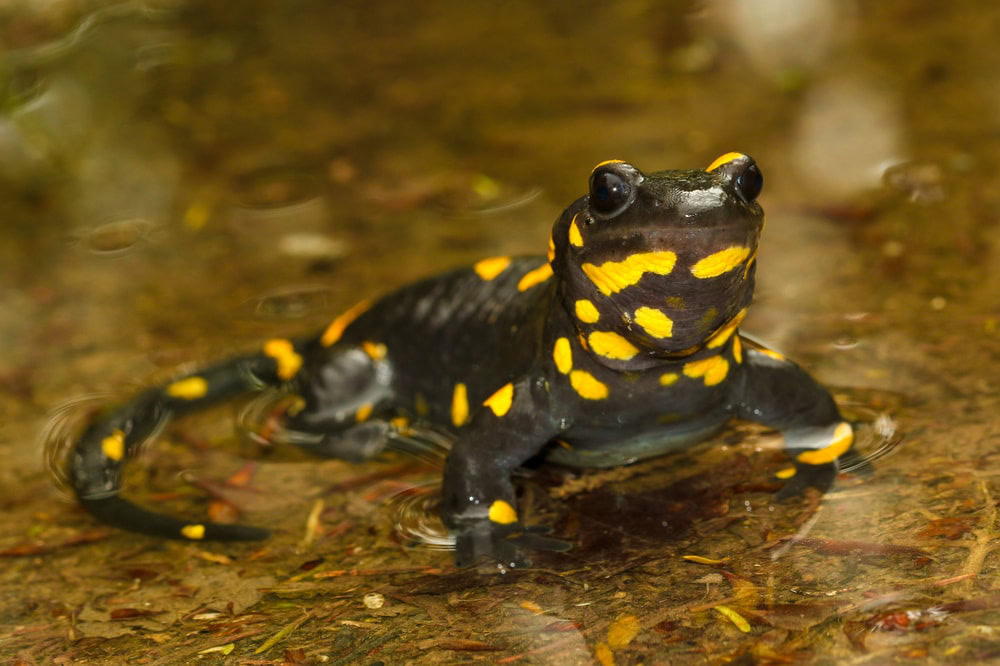
| Species name: | Salamandra salamandra |
| Lifespan: | 6–14 years on average, up to 30 years in some cases |
| Average size: | 6–12 inches |
Fire salamanders are a fairly complex species and subspecies, with at least six varieties available. They are large amphibians, ranging between 6 and 12 inches in adulthood, and they typically have a brown or glossy black coloration with lighter spots.
In their natural habitat, Fire salamanders have a large range, so they’ll be most comfortable in as large a tank as you can provide them. They’ll need a substrate of moss, bark, and leaf litter, and if you intend to breed them, they’ll need a small body of water, too. They are largely terrestrial animals; they will not use water much except when they breed.
7. Marbled Salamander
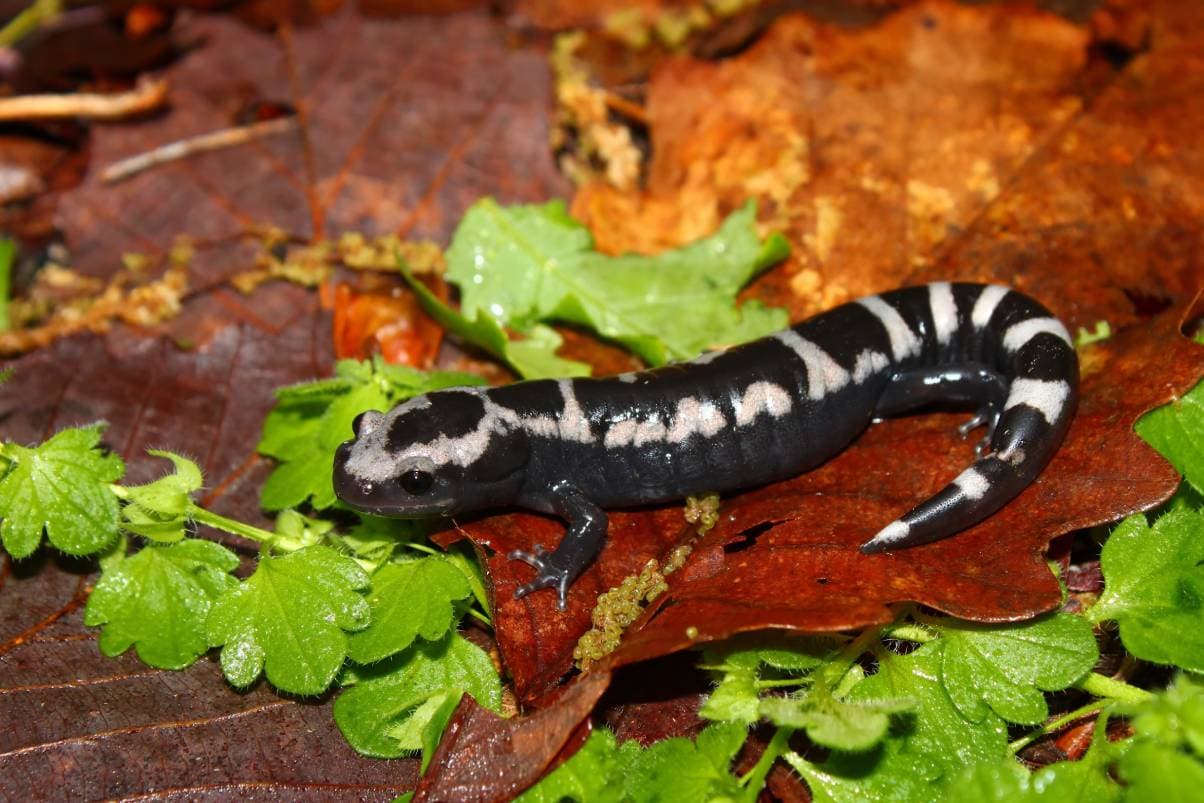
| Species name: | Ambystoma opacum |
| Lifespan: | 4–10 years |
| Average size: | 4–5 inches |
The medium-sized yet chunky Marbled salamander reaches up to 5 inches in adulthood but is thick-set and bulky for its size. They are typically black with white bars running horizontally down their bodies and on their heads. These salamanders spend most of their time underground in burrows, leading to their nickname, “mole salamanders.”
A deep enough substrate of loose soil is preferable for Marbled salamanders, but moistened paper towels can be used as a temporary replacement, with crumpled sections to allow them shelter. They should also have rock or bark shelters when using paper to provide a few hiding places.
- Related Read: 10 Best Amphibian Pet Species (With Pictures)
8. Tiger Salamander
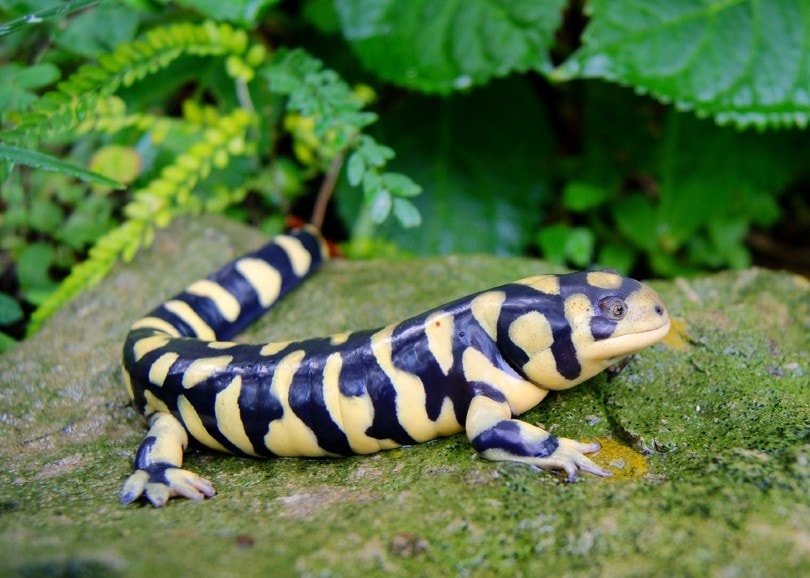
| Species name: | Ambystoma tigrinum |
| Lifespan: | 10–20 years |
| Average size: | 8–13 inches |
The Tiger Salamander is one of the most widespread and popular species, mostly due to its beautiful, unique coloring and easy-going nature. These bold animals are known to recognize their owners and may even beg for food! They can reach up to 13 inches in age in adulthood and live up to 20 years in captivity.
Another reason for the popularity of Tiger salamanders is their ease of care. They can be housed in various enclosures and live a terrestrial life. Organic topsoil free from chemicals or pesticides is ideal because they love to burrow, and pieces of driftwood, rocks, or bark make great hiding places. If you are new to keeping salamanders and newts, the Tiger salamander is by far the easiest to care for and the easiest to acquire.
- You might also like: Can a Dog Eat Cat Food? What You Need To Know!
Featured Image Credit: Matt Jeppson, Shutterstock





